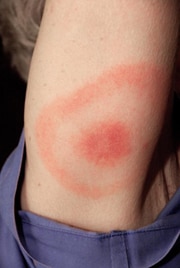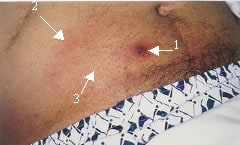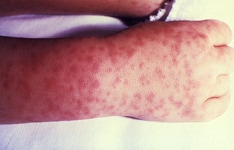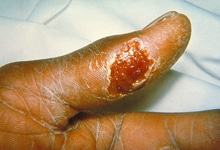Symptoms of Tickborne Illness
Many tickborne diseases can have similar signs and symptoms. If you have been bitten by a tick and develop the symptoms below within a few weeks, you need to schedule an appointment with Winston Medical Clinic-Main or Noxapater by calling 662-773-3503 or 662-724-4051!
- Fever/chills: With all tickborne diseases, patients can experience fever at varying degrees and time of onset.
- Aches and pains: Tickborne disease symptoms include headache, fatigue, and muscle aches. With Lyme disease you may also experience joint pain. The severity and time of onset of these symptoms can depend on the disease and the patient’s personal tolerance level.
- Rash: Lyme disease, southern tick-associated rash illness (STARI), Rocky Mountain spotted fever (RMSF), ehrlichiosis, and tularemia can result in distinctive rashes:
- In Lyme disease, the rash may appear within 3-30 days, typically before the onset of fever. The Lyme disease rash is the first sign of infection and is usually a circular rash called erythema migrans or EM. This rash occurs in approximately 70-80% of infected persons and begins at the site of a tick bite. It may be warm, but is not usually painful. Some patients develop additional EM lesions in other areas of the body several days later.
- The rash of (STARI) is nearly identical to that of Lyme disease, with a red, expanding “bulls eye” lesion that develops around the site of a lone star tick bite. Unlike Lyme disease, STARI has not been linked to any arthritic or neurologic symptoms.
- The rash seen with Rocky Mountain spotted fever (RMSF) varies greatly from person to person in appearance, location, and time of onset. About 10% of people with RMSF never develop a rash. Most often, the rash begins 2-5 days after the onset of fever as small, flat, pink, non-itchy spots (macules) on the wrists, forearms, and ankles and spreads to the trunk. It sometimes involves the palms and soles. The red to purple, spotted (petechial) rash of RMSF is usually not seen until the sixth day or later after onset of symptoms and occurs in 35-60% of patients with the infection.
- In the most common form of tularemia, a skin ulcer appears at the site where the organism entered the body. The ulcer is accompanied by swelling of regional lymph glands, usually in the armpit or groin.
- In about 30% of patients (and up to 60% of children), ehrlichiosis can cause a rash. The appearance of the rash ranges from macular to maculopapular to petechial, and may appear after the onset of fever.
Tickborne diseases can result in mild symptoms treatable at home to severe infections requiring hospitalization. Although easily treated with antibiotics, these diseases can be difficult for physicians to diagnose. However, early recognition and treatment of the infection decreases the risk of serious complications. So see your doctor immediately if you have been bitten by a tick and experience any of the symptoms described here.


- Site of tick bite
- Red, radial, expanding edge of rash
- Central clearing


This information is provided by the Centers of Disease Control and Prevention.
